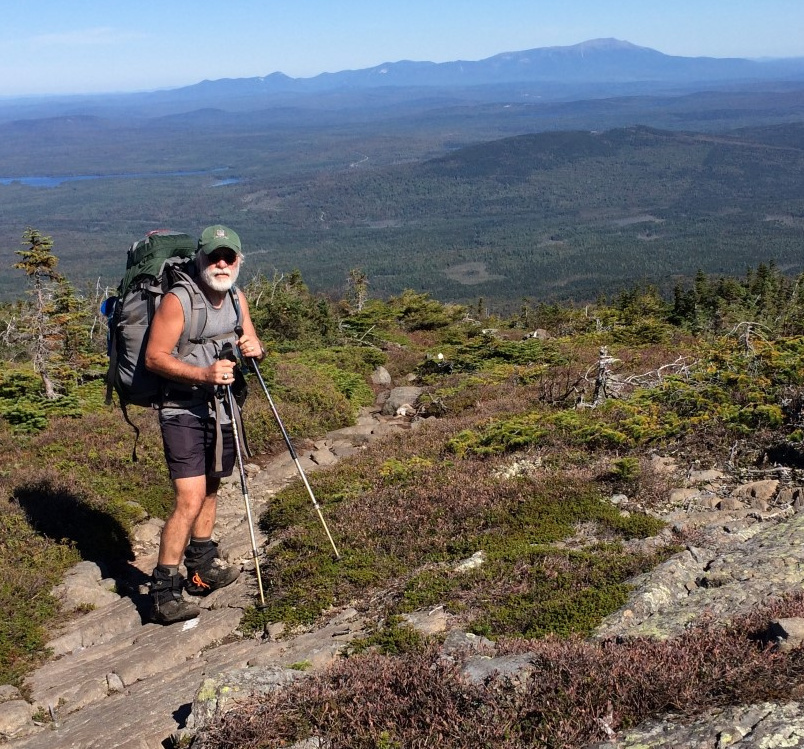The Appalachian Trail is the most famous long distance footpath in the world, and with the recent release of the movie “A Walk in the Woods,” it’s likely to become more popular than ever. According to the Appalachian Trail Conservancy, over 3 million people take to the trail each year, for a day, a weekend or a week, and, for some, many months.
Hiking the entire AT is the adventure of a lifetime, and mastering the grueling 2,189.2 miles from Springer Mountain, Georgia, to Baxter Peak on Maine’s Katahdin is a crowning achievement for any backpacker.
From the time the Appalachian Trail was completed in 1937 through the end of 1969, just 59 people had walked the whole trail. During the 1970s, 764 hikers joined the ranks of end-to-enders, including this hiker in 1977. Between 1980 and 2010, more than 10,000 more made the trek. Today, an estimated 20,000 backpackers lay claim to the “2,000-miler” mantle.
This hiker was one of some 3,500 individuals who attempted the AT in 2015, and I feel fortunate to be counted among those who made it all the way, battered gear and bruised body parts notwithstanding. With an attrition rate hovering around 75 percent, the dreams of many others, despite their extraordinary efforts, were dashed.
Between March and October, I hiked and camped through four seasons of weather and the beautiful mountain scenery of 14 states, met friendly people and enjoyed the camaraderie of hikers from around the country and the globe, experienced the hospitality of trail towns and the kindness of trail angels, survived several scary wildlife encounters (snakes, bears, bees), and coped with the many highs and lows of putting one foot in front of the other for six long months.
The AT is much different than when I hiked it 38 years ago. There were a lot fewer people on the trail then, which made for a much lonelier hike. I hitchhiked or walked into towns to resupply; shuttles were unheard of. I carried state road maps to locate towns and once there, had to figure out where everything was.
Hostels were few, as were outfitters, and grocery stores carried little in the way of lightweight foods. Gear was heavy, and trail guides and maps were bulky. Spotty trail blazing and signage often left me wondering which way to go. Communication was by pay phone and letters in the mail.
Today, hikers are armed with a wealth of helpful information, and there are services and amenities aplenty. Everyone uses a smartphone to post to social media sites, check the weather, book accommodations and rides, write journals, take photos and read e-books. Several GPS apps allow you to dispense with guidebooks and maps altogether. Ultra-lightweight gear and clothing are standard, as are packable foods.
In 1977 the AT had yet to be fully protected, but today a conservation corridor encompassing 270,000 acres forms what is America’s skinniest national park. Local volunteers maintain the permanent trail route as well as the hundreds of shelters, campsites and privies. Trail mileage on roads has decreased from 200 to 20.
There may be more hikers than ever on the trail today, but ample solitude is easy to find, the natural beauty still beckons, the physical and mental challenge of months of continuous hiking is the same and the overall experience remains life-changing.
Looking ahead, I’ve got my eye on a few long trails, including the Colorado Trail, New England Trail, GR 11 through the French Pyrenees and across Britain from Land’s End to John O’Groats. For now, however, I’m just happy to be home.
If you have an AT thru-hike in mind for next year, now’s the time to get planning in earnest. Let me know if I can help.
Carey Kish of Mount Desert Island is author of AMCs Best Day Hikes Along the Maine Coast and editor of AMC’s Maine Mountain Guide. Follow more of Carey’s outdoor adventures at
mainetoday.com/blog/maineiac-outdoors.
Send questions/comments to the editors.



Success. Please wait for the page to reload. If the page does not reload within 5 seconds, please refresh the page.
Enter your email and password to access comments.
Hi, to comment on stories you must . This profile is in addition to your subscription and website login.
Already have a commenting profile? .
Invalid username/password.
Please check your email to confirm and complete your registration.
Only subscribers are eligible to post comments. Please subscribe or login first for digital access. Here’s why.
Use the form below to reset your password. When you've submitted your account email, we will send an email with a reset code.